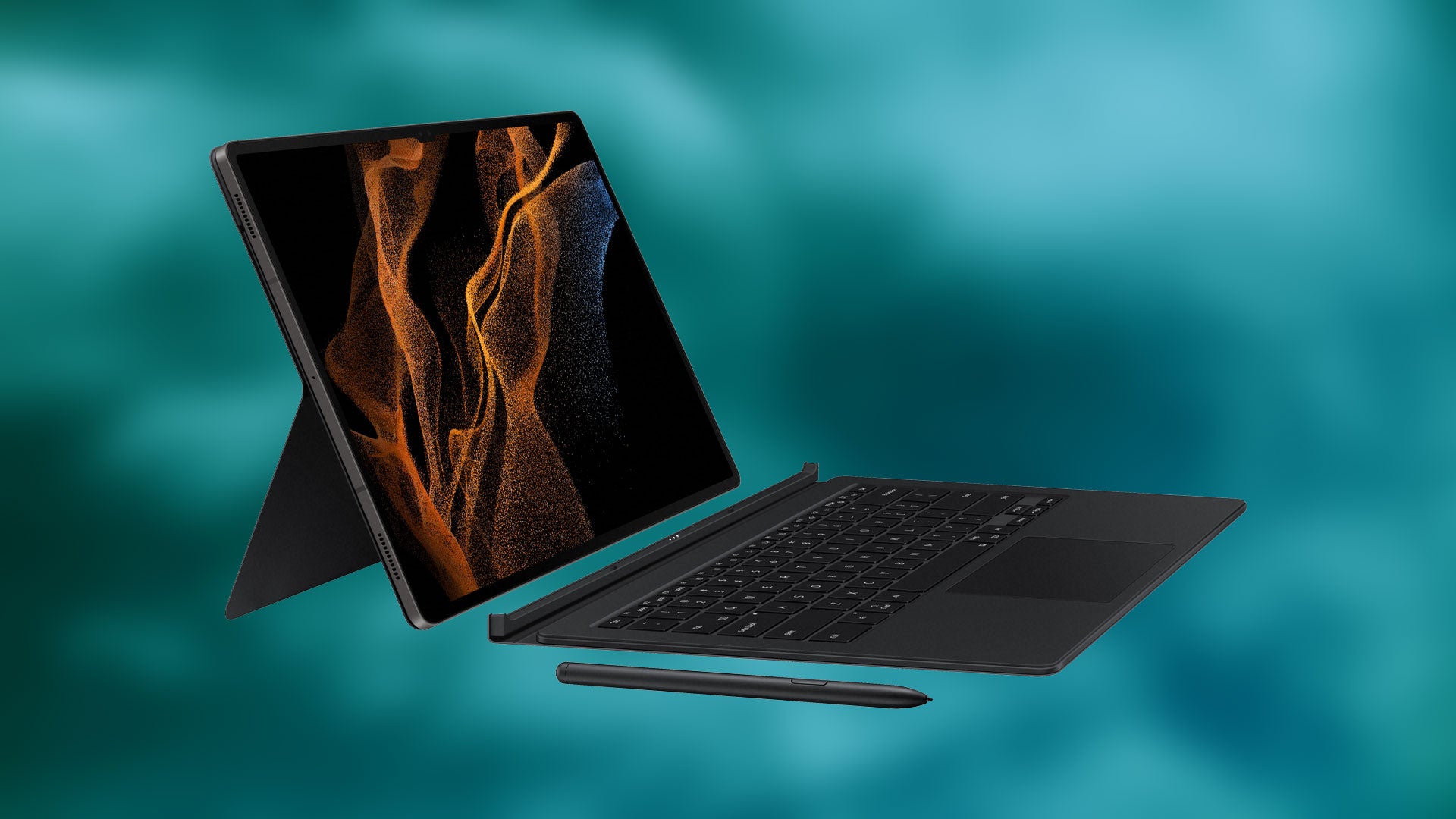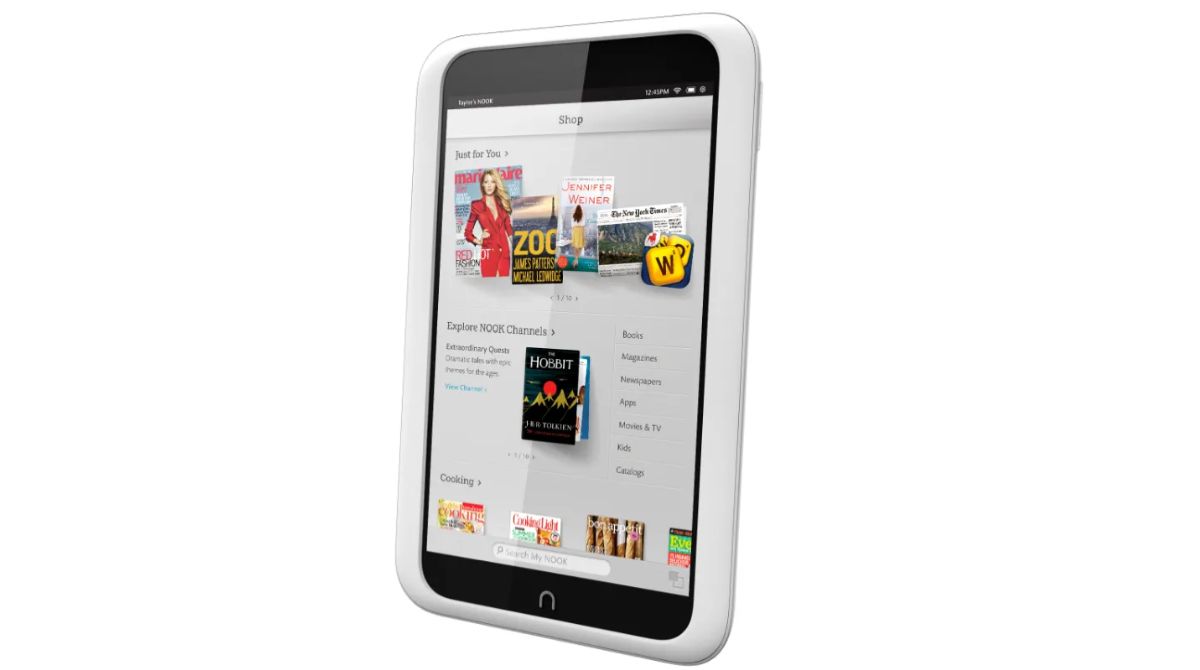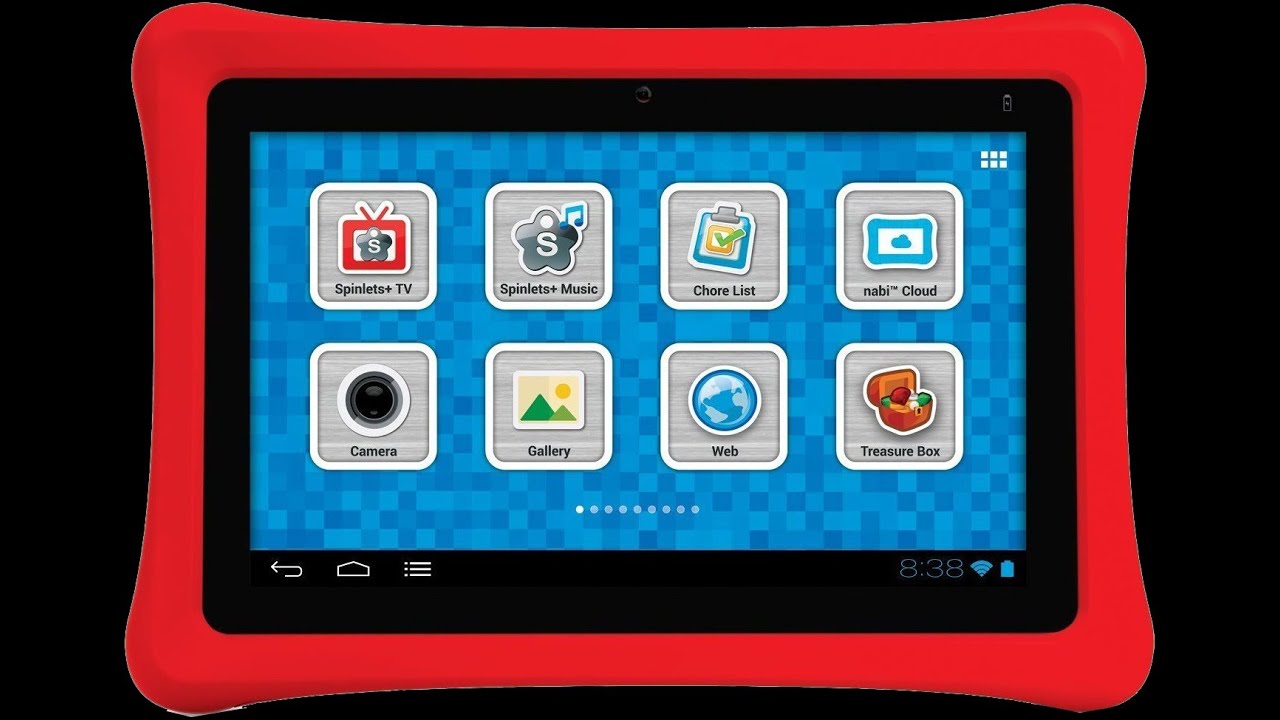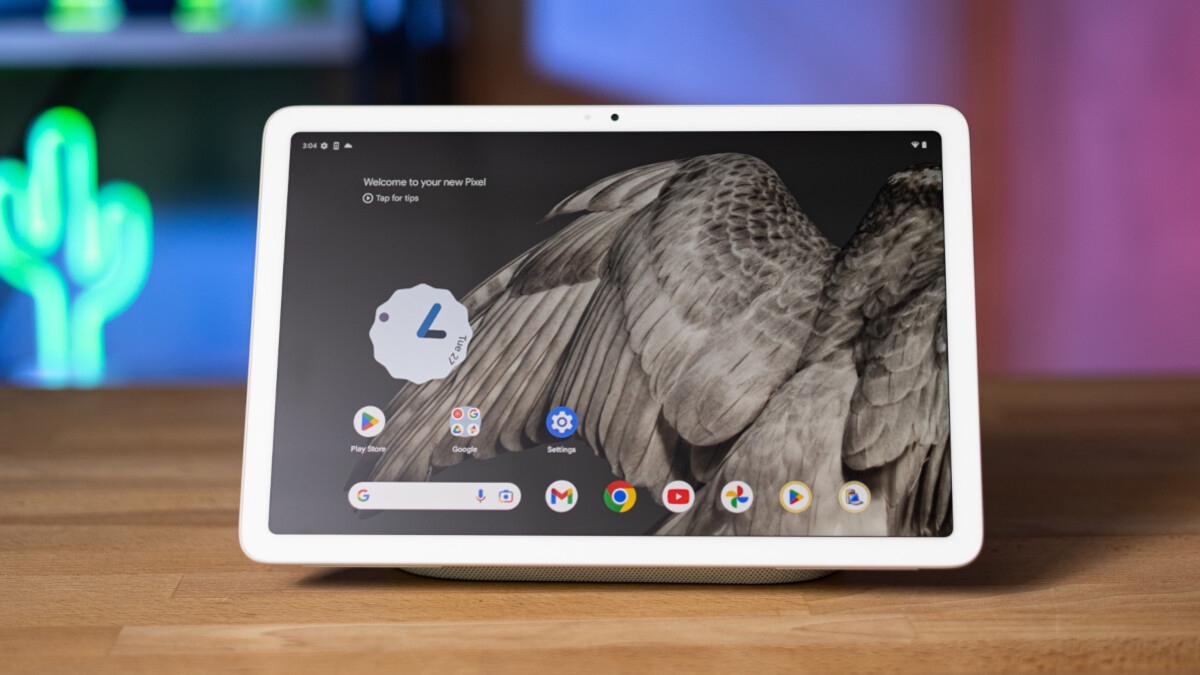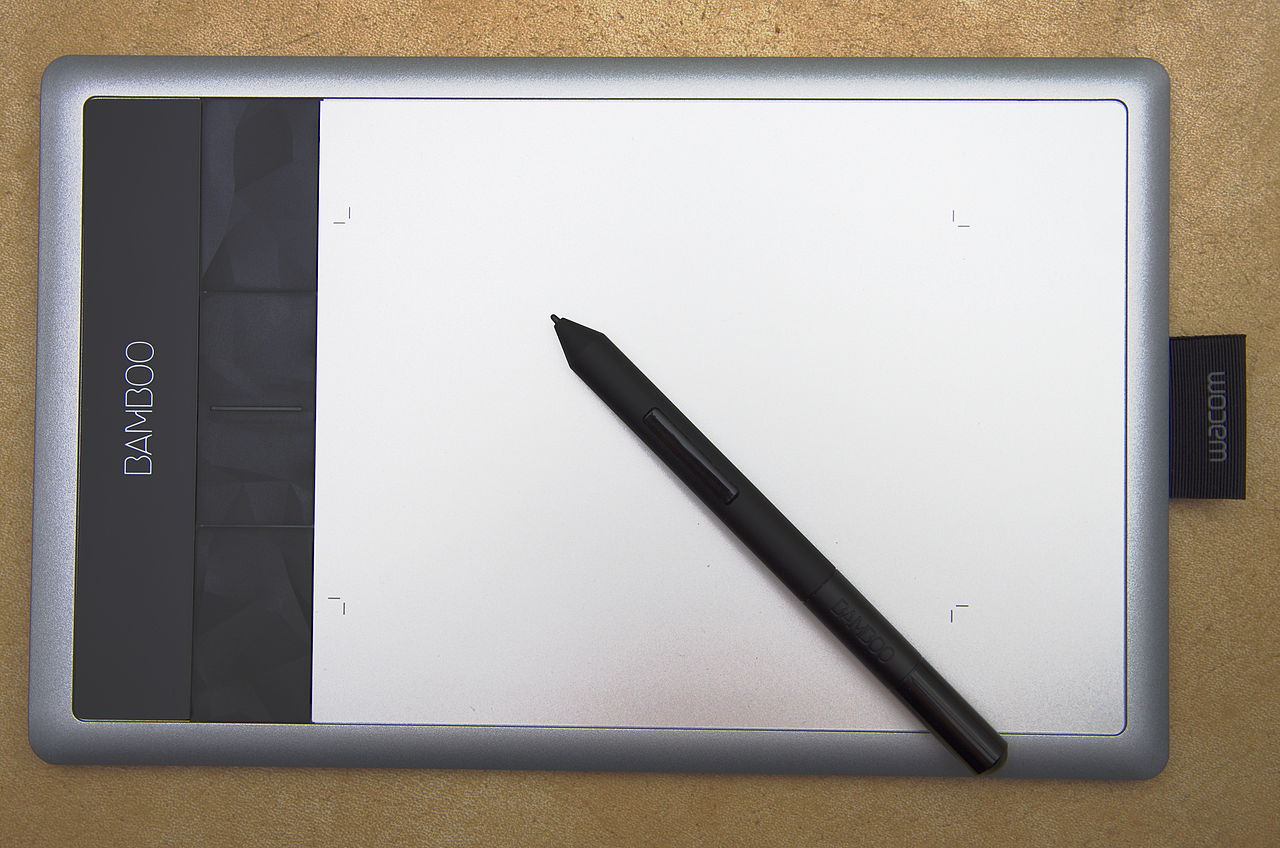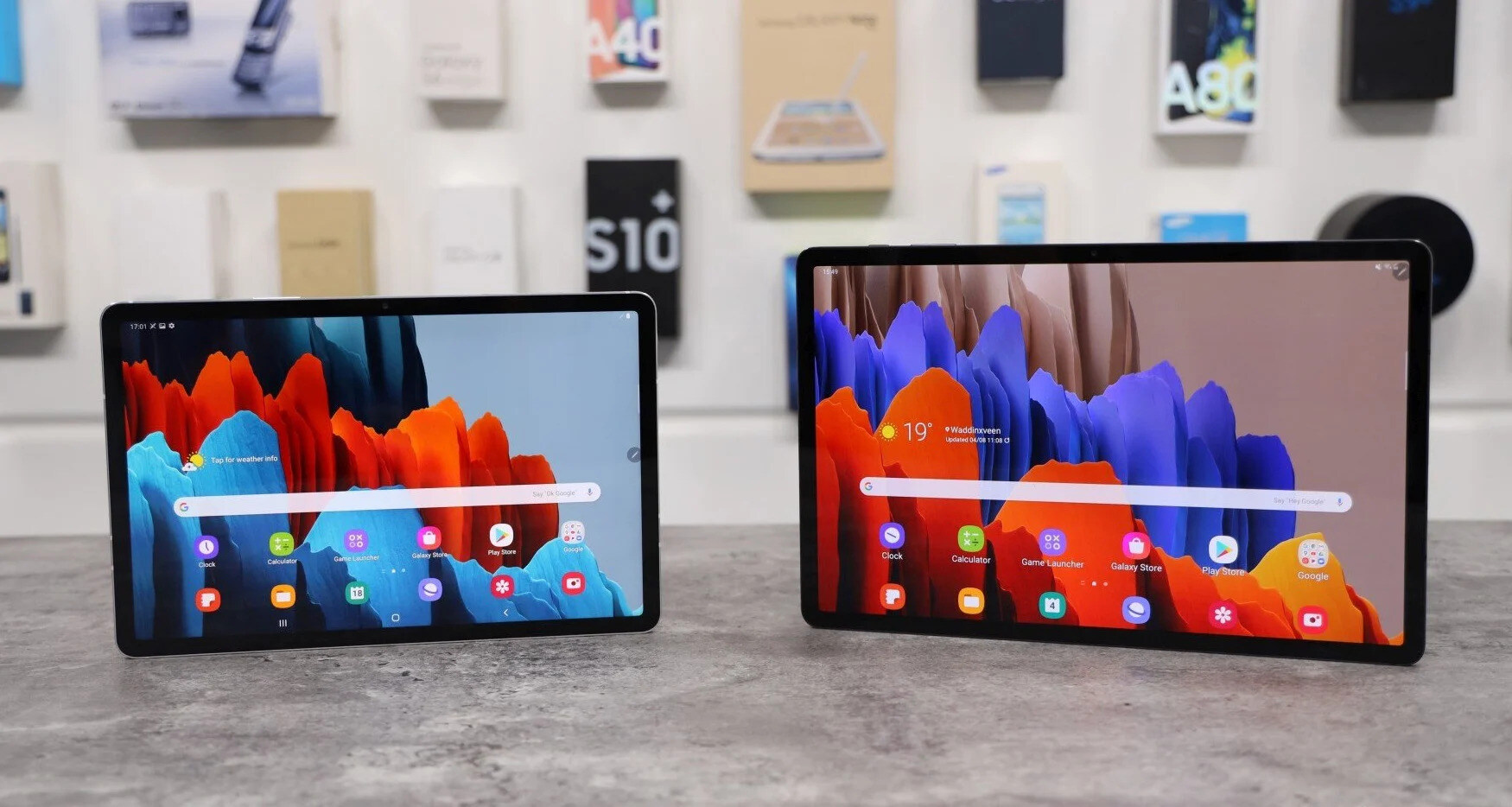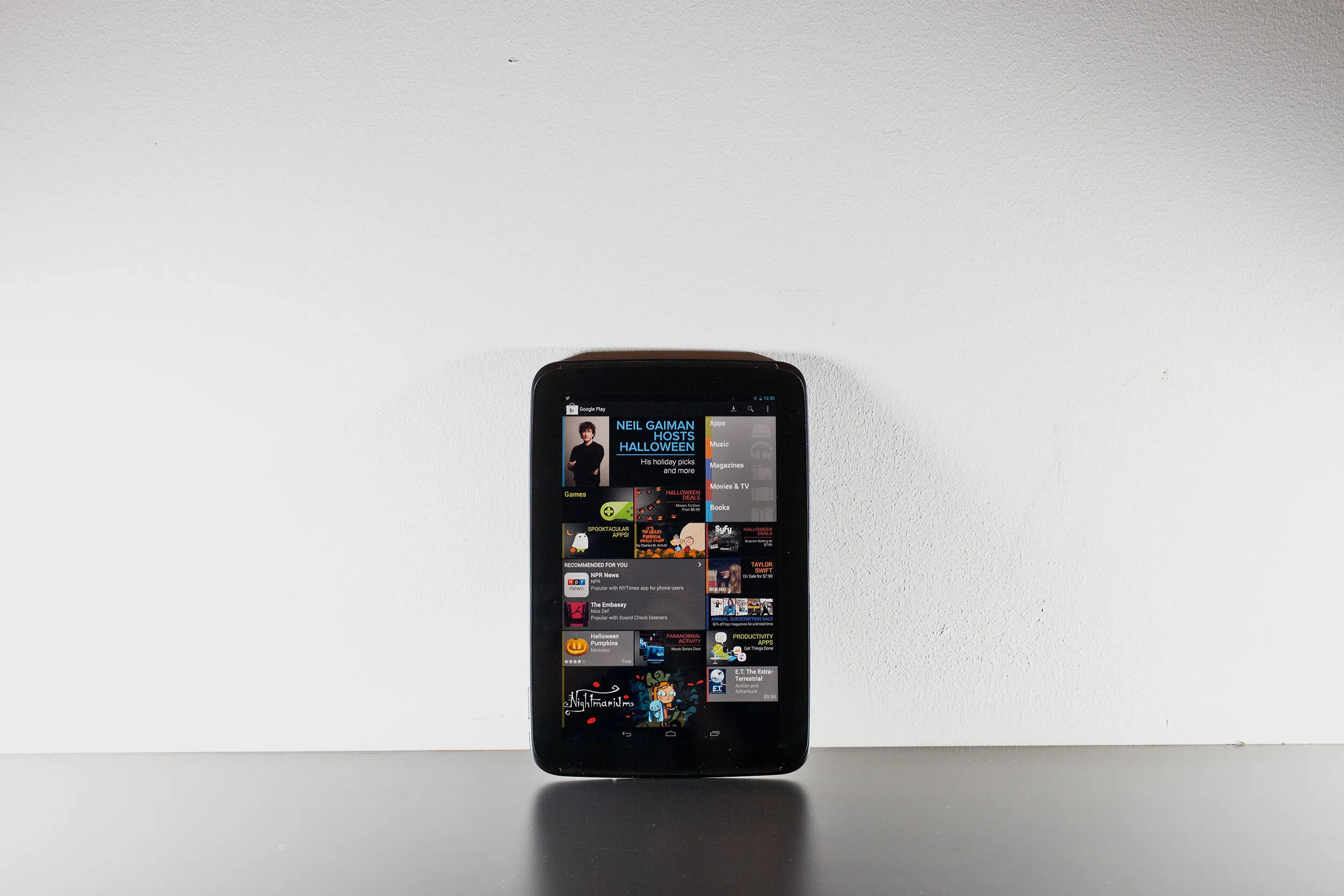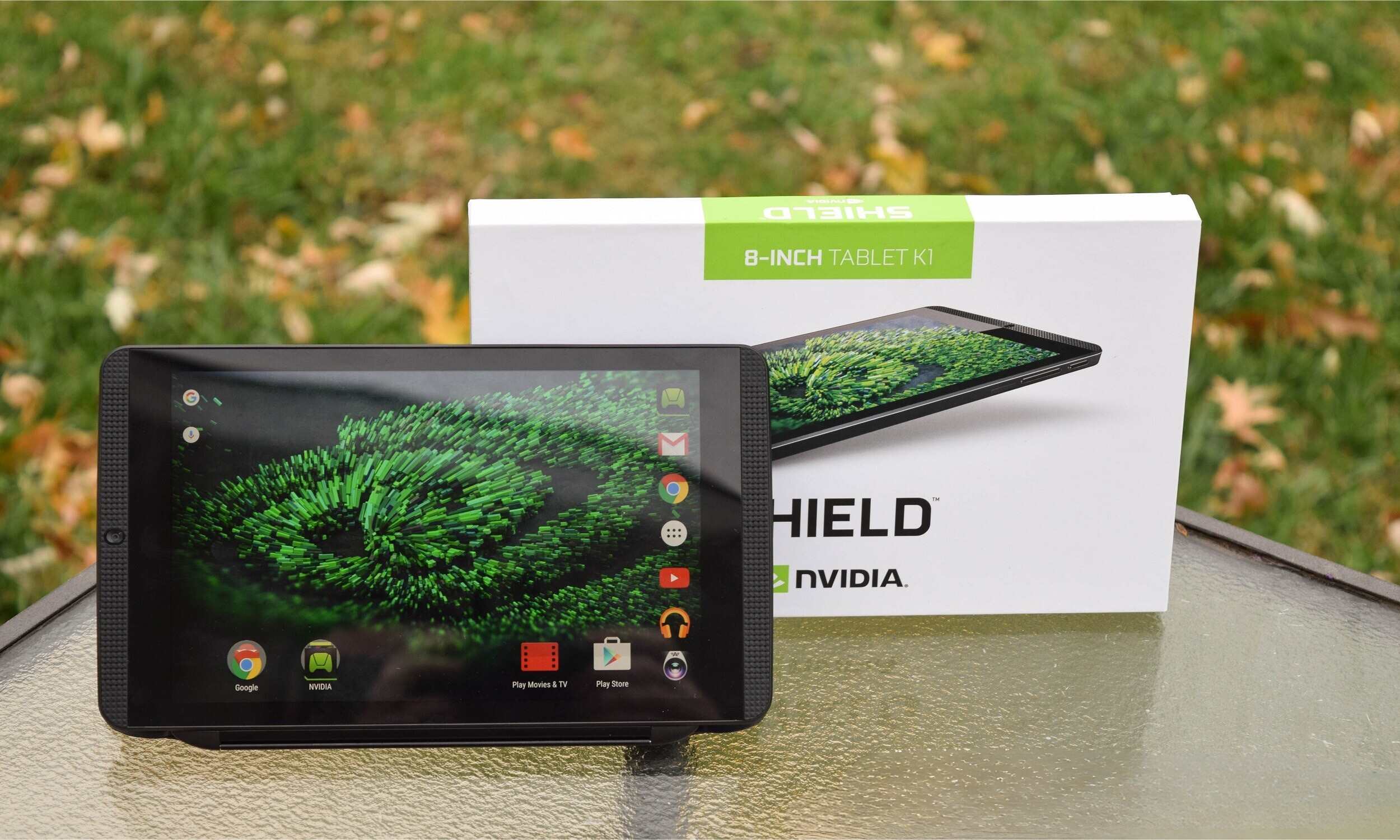Introduction
Welcome to our comprehensive guide on choosing the best tablet for your needs. In today’s technology-driven world, tablets have become an essential device for both personal and professional use. Their portability, versatility, and powerful capabilities make them the perfect companion for entertainment, productivity, and everything in between.
With so many options available in the market, selecting the right tablet can feel overwhelming. Factors such as operating systems, sizes, performance, storage, and pricing all play crucial roles in making the best choice. In this guide, we will provide you with an in-depth analysis of these factors, helping you navigate through the vast sea of options.
Tablets come in various shapes, sizes, and operating systems. Android, iOS, and Windows are the primary operating systems you will encounter. Each offers unique features, interfaces, and compatibility. We will break down these operating systems to help you understand their strengths and weaknesses.
Another significant consideration is the tablet’s size and display. From compact tablets that fit comfortably in your hand to larger models that offer a true cinematic experience, the size of the tablet can greatly impact your comfort and usability. We will explore these different sizes and discuss how they affect portability and functionality.
Performance and processing power are crucial for a smooth and efficient user experience. Whether you’re gaming, streaming, or multitasking, a powerful processor and ample RAM are essential. We will dive into the technical specifications that determine a tablet’s performance and explain what to look for when comparing different models.
Storage and memory play a vital role in deciding how much content you can store on your tablet. Whether it’s movies, music, or documents, having sufficient storage ensures you have everything at your fingertips. We will explore different storage options and help you determine the ideal amount of space for your needs.
Battery life is another vital factor to consider, especially if you’re constantly on the move. A tablet with long-lasting battery power will enable you to stay connected and entertained without worrying about frequent charging. We will discuss how battery life varies among different tablets and provide insights into maximizing usage.
Connectivity options such as Wi-Fi, Bluetooth, and cellular connectivity are crucial for staying connected with the world and accessing the internet on the go. We will delve into these options, highlighting their importance and discussing their impact on overall tablet functionality.
A tablet’s camera and audio features can greatly enhance your multimedia experience. Whether you’re capturing memorable moments or enjoying your favorite movies, having a high-quality camera and immersive audio can make all the difference. We will examine the camera and audio capabilities of various tablets and recommend the ones that excel in these areas.
Price range and budget are essential considerations that can influence your final decision. We will provide an overview of different tablet price ranges and discuss what you can expect in terms of features and performance at different price points. This will help you find the perfect balance between your needs and budget.
Lastly, we will explore popular tablet brands and models that consistently deliver exceptional performance and customer satisfaction. This will help you narrow down your options and consider reliable and well-known brands that have stood the test of time.
By the end of this guide, you will be equipped with all the necessary information to confidently choose the best tablet that meets your specific requirements. So, let’s dive in and find the perfect tablet that will revolutionize your digital experience!
Factors to Consider When Choosing a Tablet
When it comes to choosing the best tablet for your needs, there are several factors to take into consideration. By carefully evaluating these factors, you can ensure that the tablet you select aligns with your requirements and provides the functionality and features you desire. Let’s explore the key factors that should influence your decision:
- Intended Use: Consider how you plan to use the tablet. Are you primarily looking for entertainment purposes, such as streaming movies or playing games? Or do you need a tablet for productivity, like editing documents or creating artwork? Understanding your intended use will help you determine the necessary specifications and features.
- Operating System: The operating system of a tablet is an important consideration as it impacts the user interface, app availability, and overall user experience. The three major operating systems are Android, iOS, and Windows. Android offers customization and a wide range of apps, iOS provides a seamless ecosystem and a vast app store, while Windows offers compatibility with desktop software but has a smaller app selection.
- Size and Display: The size and display of the tablet should complement your preferences and needs. Smaller tablets, such as 7 or 8-inch models, offer excellent portability, while larger tablets, like 10 or 12-inch options, provide a better viewing experience. Consider factors like resolution, brightness, color accuracy, and touch sensitivity when evaluating the display.
- Performance and Processing Power: A tablet’s performance is determined by its processor, RAM, and GPU. If you plan to run resource-intensive apps or multitask, opt for a tablet with a powerful processor and ample RAM. Higher-powered tablets offer smoother performance, quicker app launches, and better gaming capabilities.
- Storage and Expandability: Storage capacity determines how much content you can store on your tablet. Consider your needs for downloading apps, storing photos and videos, and keeping documents. Additionally, check if the tablet offers expandable storage via microSD cards or if it relies solely on internal storage.
- Battery Life: The battery life of a tablet is crucial for prolonged usage without constant charging. Look for tablets that offer long battery life to ensure uninterrupted entertainment or productivity on the go. Battery capacity is usually measured in milliamp-hours (mAh), with higher numbers indicating longer battery life.
- Connectivity Options: Ensure that the tablet provides the connectivity options you require. Common options include Wi-Fi, Bluetooth, and cellular connectivity. Wi-Fi enables internet access, Bluetooth allows for wireless accessories like keyboards or speakers, and cellular connectivity ensures you can use the tablet on the go with a data plan.
- Camera and Audio: If you enjoy taking photos, recording videos, or engaging in video chats, consider the camera capabilities of the tablet. Look for higher megapixel counts, additional camera features, and video recording resolution. Similarly, check for audio quality and features like stereo speakers or support for external audio devices if you enjoy immersive multimedia experiences.
- Price Range and Budget: Set a budget that aligns with what you’re willing to spend on a tablet. Consider the price range and performance ratio, comparing the capabilities and features of different tablets within your budget. Remember to strike a balance between your budget and your desired functionality.
By evaluating these factors based on your specific requirements and preferences, you can narrow down the options and choose the tablet that best suits your needs. In the following sections, we will delve deeper into each factor, providing insights and recommendations to help inform your decision-making process. Let’s continue exploring the exciting world of tablets!
Tablet Operating Systems
One of the key decisions when choosing a tablet is selecting the right operating system (OS). The operating system determines the user interface, app availability, and overall experience of using the tablet. There are three major operating systems dominating the tablet market: Android, iOS, and Windows. Let’s take a closer look at each:
Android: Developed by Google, Android is the most widely used operating system for tablets. It offers a highly customizable user interface, allowing you to personalize your tablet’s look and feel. Android provides access to the Google Play Store, which houses a vast collection of apps, games, and other content. Furthermore, Android tablets often offer seamless integration with other Google services like Gmail, Google Drive, and Google Photos. With Android, you have the freedom to choose from various tablet models across different price ranges, making it a versatile and accessible option.
iOS: Apple’s iOS is exclusive to the iPad lineup and offers a polished and intuitive user experience. iOS guarantees a smooth performance and excellent optimization due to the closed ecosystem, where Apple controls both hardware and software. The App Store for iOS provides a vast collection of high-quality apps specifically designed for iPad, ensuring a seamless and rich app experience. iOS excels in areas like multimedia consumption, creative tasks with apps like GarageBand and iMovie, and productivity with software like Pages and Keynote. If you’re already part of the Apple ecosystem or value a simplified and user-friendly interface, iOS is a compelling choice.
Windows: Windows tablets bring the familiarity and power of a full-fledged desktop operating system to a portable device. With Windows, you can run desktop software like Microsoft Office and Adobe Photoshop, offering a more comprehensive productivity experience. The Microsoft Store also provides a growing collection of touch-optimized apps for tablets. Windows tablets offer versatility by transforming into a mini laptop when paired with a detachable keyboard or a stylus for note-taking or creative tasks. While Windows tablets may have a narrower selection of tablet-specific apps compared to Android or iOS, they are ideal for users who require compatibility with desktop software or prefer a more traditional Windows experience.
Ultimately, the choice of operating system depends on personal preferences, intended use, and compatibility with existing devices or software. Consider factors like app availability, customization options, ecosystem integration, and compatibility requirements as you evaluate different operating systems. Whether you prioritize flexibility and customization (Android), simplicity and ecosystem integration (iOS), or compatibility with desktop software (Windows), each operating system offers unique features and benefits to enhance your tablet experience.
In the next sections, we will explore other essential aspects of choosing a tablet, including tablet sizes and display, performance and processing power, storage and memory, battery life, connectivity options, camera, and audio features, as well as factors related to price range and popular tablet brands. Keep reading to gather the necessary information that will allow you to make an informed decision and find the perfect tablet for your needs!
Tablet Sizes and Display
When it comes to tablets, size matters. The size of a tablet determines its portability, ease of use, and overall functionality. Tablets are available in a range of sizes, from compact models that fit comfortably in your hand to larger devices that provide a more immersive viewing experience. Consider the following factors when evaluating tablet sizes and displays:
Compact Tablets: These tablets typically have screen sizes ranging from 7 to 8 inches. They are lightweight, highly portable, and ideal for users who prioritize mobility and convenience. Compact tablets are well-suited for tasks like reading e-books, browsing the internet, and watching videos on the go. Their smaller size makes them easy to hold in one hand and fit into small bags or pockets, making them perfect for travelers or those who want a tablet for casual use.
Standard-Sized Tablets: Tablets with screen sizes between 9 and 10 inches fall into this category. They strike a balance between portability and a larger display, making them versatile and suitable for various tasks. Standard-sized tablets provide a more immersive viewing experience, especially for multimedia content and gaming. They offer a larger viewing area, which is advantageous for reading, editing documents, and multitasking. If you need a tablet that can handle productivity tasks without sacrificing portability, a standard-sized tablet may be the right choice.
Large Tablets: These tablets usually have screen sizes exceeding 10 inches. Large tablets excel in providing a cinematic viewing experience, making them perfect for media consumption, gaming, and creative tasks. The expanded screen real estate enables better multitasking, allowing you to comfortably work on multiple apps side by side. Large tablets offer a more immersive and detailed visual experience, which is great for graphic designers, video editors, and anyone who values a larger display. However, it’s important to note that the larger size can make them less portable and slightly bulkier.
In addition to screen size, display quality is an essential aspect to consider. The resolution, brightness, color accuracy, and touch sensitivity all play a crucial role in determining the visual experience on a tablet. High-resolution displays result in sharper and more vibrant images, while sufficient brightness ensures readability in various lighting conditions. Color accuracy is important for tasks such as photo editing or graphic design, where accurate representation of colors is vital. Lastly, touch sensitivity ensures smooth navigation and responsiveness, enhancing the overall usability of the tablet.
Ultimately, the choice between tablet sizes and display comes down to personal preference and usage requirements. If you prefer portability and ease of use on the go, compact or standard-sized tablets might be the right fit. However, if you prioritize a larger and more immersive visual experience for media consumption or productivity tasks, a larger tablet might be the optimal choice.
In the subsequent sections, we will explore other important considerations to help you choose the best tablet for your needs. We will discuss factors like performance and processing power, storage and memory, battery life, connectivity options, camera and audio features, as well as price range and popular tablet brands. Stay tuned for more valuable insights and recommendations!
Performance and Processing Power
When it comes to choosing a tablet, performance and processing power play a significant role in determining the device’s capability and overall user experience. Whether you’re using the tablet for gaming, streaming, productivity, or multitasking, a tablet with robust performance ensures smooth operation and efficient usage. Here are the key factors to consider:
Processor: The processor, or central processing unit (CPU), is the brain of the tablet. It determines how quickly the device can perform tasks, handle multiple applications simultaneously, and deliver smooth animations and transitions. Manufacturers commonly use processors designed by companies like Qualcomm, Apple, or MediaTek. Look for tablets with modern processors and multiple cores for superior performance. Higher clock speeds and advanced architectures contribute to faster processing and improved efficiency, resulting in smoother performance across various applications and tasks.
RAM: Random access memory (RAM) is crucial for multitasking and overall performance. It allows the tablet to store and access data quickly, reducing load times and enhancing responsiveness. A higher RAM capacity ensures smoother multitasking, enabling you to switch between apps seamlessly. If you plan on running resource-intensive apps or multitasking heavily, opt for tablets with at least 4GB or more of RAM to ensure a smooth experience.
Graphics Processing Unit (GPU): The GPU is responsible for rendering images, videos, and games on the tablet’s display. Tablets designed for gaming or graphic-intensive tasks should have a powerful GPU to deliver smooth and immersive visuals. Advanced GPUs enhance gaming performance, enable smooth video playback at higher resolutions, and support graphic design or photo editing apps. Popular GPU manufacturers include Adreno (Qualcomm), PowerVR (Apple), and Mali (ARM).
Benchmark Scores: Benchmark scores provide objective measures of a tablet’s performance compared to other devices. Popular benchmarks like Geekbench and AnTuTu assign scores based on the tablet’s CPU, GPU, and memory performance. They can serve as a reference point to gauge the tablet’s capabilities and compare different models. However, it’s important to note that real-world performance can vary depending on various factors, including software optimization, system resources, and individual usage scenarios.
Software Optimization: Manufacturers often customize the operating system (OS) and software to optimize performance on their tablets. This includes software enhancements and optimizations to ensure smooth operation and efficient resource management. Manufacturers like Apple with iOS or Google with its Pixel devices are known for their meticulous software optimization, resulting in excellent overall performance.
When evaluating performance and processing power, keep in mind that higher specifications don’t always equate to better performance. Software optimization, efficient resource management, and overall system integration are equally important in delivering a smooth and responsive user experience. It’s essential to strike a balance between the tablet’s specifications and practical performance.
In the next sections, we will delve into other crucial aspects of choosing a tablet, such as storage and memory, battery life, connectivity options, camera and audio features, as well as factors related to price range and popular tablet brands. Stay tuned for more valuable insights and recommendations in your search for the perfect tablet!
Storage and Memory
Storage and memory are vital considerations when choosing a tablet, as they directly impact the amount of data you can store on the device and its overall performance. Understanding the differences between storage and memory will help you make an informed decision based on your needs. Let’s explore these factors:
Storage: Tablet storage refers to the capacity for storing various types of data, including apps, photos, videos, documents, and more. It is measured in gigabytes (GB) or terabytes (TB). When considering storage, it’s essential to determine your specific storage requirements. If you primarily use your tablet for media consumption or gaming and require ample space for storing large files, opt for tablets with larger storage capacities, typically ranging from 64GB to 512GB or even 1TB. Keep in mind that the available storage is slightly lower than the stated capacity due to the operating system and pre-installed software taking up some space.
Expandable Storage: Some tablets offer the option to expand the storage capacity using external memory cards, typically utilizing microSD or USB drives. This feature allows you to increase the tablet’s storage space cost-effectively and on-demand. If you anticipate a need for additional storage in the future, consider tablets that provide expandable storage options.
Memory (RAM): While storage refers to the amount of space available for storing data, memory, specifically random access memory (RAM), determines the tablet’s ability to handle multiple tasks simultaneously and efficiently. RAM allows the tablet to access and manipulate data quickly, resulting in faster app launches and smoother multitasking. Higher RAM capacities, such as 4GB or 6GB, are recommended for seamless multitasking and running resource-intensive apps. If you mainly use your tablet for basic tasks like web browsing and media consumption, 2GB or 3GB of RAM should suffice.
It’s important to note that storage and memory serve different purposes. Storage is used for long-term data retention, while memory (RAM) is utilized for temporary data storage during active usage. To ensure optimal performance, it’s recommended to have a sufficient amount of both storage and RAM for your specific needs.
Remember to consider the type of data you’ll be storing on your tablet. For example, if you regularly download movies, games, or have a large collection of photos, videos, or documents, you may require more storage space. On the other hand, if you primarily use cloud storage or streaming services to access your content, you may not need as much onboard storage.
By evaluating your specific storage and memory requirements, you can choose a tablet that offers the right balance to accommodate your needs. In the subsequent sections, we will explore other important factors that influence your tablet choice, including battery life, connectivity options, camera and audio features, as well as the price range and popular tablet brands. Stay tuned for more valuable insights and recommendations to help you find the perfect tablet!
Battery Life
Battery life is a crucial factor to consider when choosing a tablet, especially if you rely on your device for extended periods without access to a power source. The battery life of a tablet refers to how long the device can operate on a single charge. Tablet manufacturers often provide an estimated battery life in terms of hours, which can vary depending on usage patterns and settings. Here are some important considerations regarding battery life:
Battery Capacity: The battery capacity is measured in milliampere-hours (mAh) and indicates how much charge the battery can hold. Generally, tablets with larger battery capacities tend to have longer battery life. However, it’s important to note that battery life can also be affected by other factors such as display brightness, processor efficiency, and app usage.
Usage Patterns: Your tablet’s battery life will depend on how you use it. Activities like streaming videos, playing games, or using resource-intensive apps can drain the battery faster compared to reading e-books or performing basic web browsing. Keep in mind that running multiple apps simultaneously or using high screen brightness can also impact battery life.
Optimization and Energy-saving Features: Manufacturers often implement software optimization and energy-saving features to maximize the tablet’s battery life. These features include adaptive brightness, background app restrictions, and power-saving modes. Look for tablets that offer efficient power management features to optimize battery usage and extend battery life where necessary.
Real-world Usage: The estimated battery life provided by manufacturers should be taken as a reference point. Actual battery life can vary based on various factors such as screen brightness, wireless connectivity usage, and individual usage habits. Reading user reviews and professional assessments can provide insight into a tablet’s real-world battery performance.
Consider your typical usage patterns and the amount of time you need your tablet to last on a single charge. If you frequently use your tablet on the go or require long hours of usage without access to a power source, prioritize tablets with longer battery life. Tablets with battery capacities around 5,000mAh to 10,000mAh or higher can provide substantial battery life for most users.
It’s worth noting that certain tasks, like multimedia streaming or gaming, can consume more battery power compared to basic tasks like reading or web browsing. In these scenarios, having a tablet with a larger battery capacity and efficient power management features becomes even more critical.
In the following sections, we will cover other important factors to consider when choosing a tablet, including connectivity options, camera and audio features, storage and memory, as well as the price range and popular tablet brands. Stay tuned for more valuable insights and recommendations to help you make an informed decision and find the perfect tablet!
Connectivity Options
When choosing a tablet, considering the available connectivity options is essential as it determines how you can connect to the internet, accessories, and other devices. Here are the key connectivity options to evaluate:
Wi-Fi: Most tablets come with built-in Wi-Fi connectivity, allowing you to connect to wireless networks and access the internet. Wi-Fi enables you to browse the web, stream content, download apps, and stay connected to online services. When choosing a tablet, ensure it supports the latest Wi-Fi standards (e.g., Wi-Fi 6) for faster speeds, better range, and improved network efficiency.
Cellular Connectivity: Some tablets offer cellular connectivity options, allowing you to access the internet using a SIM card and cellular data plan. This feature is beneficial if you regularly use your tablet on the go and require internet access when Wi-Fi is not available. Tablets with cellular connectivity typically support 4G LTE or 5G networks, providing fast and reliable mobile internet access. Keep in mind that cellular-enabled tablets are usually more expensive than Wi-Fi-only models, and you will need to consider the cost of a data plan from your cellular service provider.
Bluetooth: Bluetooth connectivity allows you to connect wireless accessories to your tablet, such as keyboards, mice, speakers, headphones, and other compatible devices. This feature enhances the versatility and functionality of your tablet, enabling you to utilize external peripherals for tasks like typing, audio output, or controlling the tablet remotely. For seamless Bluetooth connectivity, ensure that the tablet supports the latest Bluetooth standards, as newer versions offer improved range, faster transfer speeds, and better device compatibility.
USB Ports: USB ports on tablets allow you to connect external devices like flash drives, external hard drives, or input devices. USB ports also facilitate charging other devices using the tablet’s battery power. Depending on the tablet model and its connectivity options, it may feature a USB-A port, a USB-C port, or both. USB-C ports are becoming more prevalent due to their versatility and faster transfer speeds.
Other Connectivity Features: Some tablets may offer additional connectivity features such as HDMI ports for connecting to external displays or projectors, NFC (Near Field Communication) for contactless data exchange, or even infrared (IR) blasters for controlling electronic devices like TVs and sound systems. These additional features can enhance the functionality and compatibility of your tablet, depending on your specific needs.
When choosing a tablet, evaluate your connectivity requirements based on how you plan to use the device. If you primarily use your tablet at home or in places with accessible Wi-Fi networks, a Wi-Fi-only tablet may suffice. However, if you need internet access on the go or anticipate using your tablet in areas without Wi-Fi coverage, consider tablets with cellular connectivity. Bluetooth and USB ports provide added flexibility for connecting peripherals and external devices, so ensure the tablet has the necessary connectivity options you require.
In the forthcoming sections, we will explore other important factors to consider when choosing a tablet, including camera and audio features, storage and memory, battery life, as well as the price range and popular tablet brands. Stay tuned for more insights and recommendations to guide you in finding the perfect tablet for your needs!
Camera and Audio Features
Camera and audio features are important considerations when choosing a tablet, as they enhance your multimedia experience and provide creative capabilities. Whether you enjoy capturing memories, engaging in video chats, or immersing yourself in high-quality audio, here are the key aspects to evaluate:
Camera Quality: Tablets are equipped with front and rear cameras for capturing photos and videos. The camera quality is measured in megapixels (MP), indicating the resolution and level of detail. Higher megapixel counts generally result in sharper and more detailed images. Consider your photography needs and preferences. If you prioritize excellent image quality, look for tablets with higher-resolution cameras and additional features like autofocus, image stabilization, and HDR (High Dynamic Range) capability.
Video Recording: If you frequently record videos on your tablet, consider the maximum video resolution and frame rates supported by the device. Higher resolution and frame rates allow for smoother and more detailed video capture. Look for tablets that support at least Full HD (1080p) or 4K video recording, depending on your preferences and requirements.
Front-Facing Camera: The front-facing camera, also known as the selfie camera, is essential for video chats, conference calls, and self-portraits. Consider the megapixel count and any additional features like wide-angle lenses or advanced face detection for better selfie experiences.
Audio Quality: Audio quality is crucial for an immersive multimedia experience, especially if you enjoy movies, music, or gaming. Look for tablets with stereo speakers or even quad-speaker configurations for a wider soundstage and clear audio output. Some tablets also feature advanced audio technologies like Dolby Atmos, which enhances audio quality and creates a more immersive audio environment.
Audio Jack and Wireless Audio: Depending on your preferences, consider whether the tablet features a 3.5mm audio jack for wired headphones or external speakers. Alternatively, if you prefer wireless audio, check if the tablet supports Bluetooth connectivity for seamless pairing with wireless headphones or speakers.
Microphone Quality: Good microphone quality is important for clear audio input during video calls, voice recording, or any other tasks that involve audio input. Tablets with noise-canceling microphones can help reduce background noise and ensure better audio clarity.
Consider your primary use cases for the camera and audio features. If you enjoy photography or videography and plan to use your tablet for capturing memories, prioritize tablets with higher-megapixel cameras and advanced camera features. Similarly, if you consume multimedia content or play games that rely heavily on audio, tablets with superior audio quality and speaker configurations will enhance your experience.
In the upcoming sections, we will continue exploring important factors to consider when choosing a tablet, including storage and memory, battery life, connectivity options, as well as the price range and popular tablet brands. Stay tuned for further insights and recommendations as you navigate your way to finding the perfect tablet!
Price Range and Budget
When it comes to purchasing a tablet, establishing a budget and considering the price range is an important step to ensure that you find a device that fits your financial constraints. Tablet prices can vary significantly depending on factors such as brand, size, features, and specifications. Here are some key considerations when it comes to price range and budget:
Entry-Level Tablets: Entry-level tablets typically have more affordable price points, making them a great option for budget-conscious users. These tablets offer basic functionality and are suitable for tasks like browsing the internet, checking emails, reading e-books, and watching videos. While they may not have all the premium features or the latest specifications, they can fulfill the needs of casual users or those who are new to the tablet experience.
Mid-Range Tablets: Mid-range tablets strike a balance between affordability and performance. They often offer a better combination of features, specifications, and build quality compared to entry-level tablets. Mid-range tablets typically have improved displays, better processors, larger storage capacities, and more memory. They are suitable for users who require a tablet with better performance for multitasking, productivity, or media consumption without breaking the bank.
High-End Tablets: High-end tablets cater to users who demand the latest features, advanced specifications, and exceptional build quality. These tablets usually have premium designs, high-resolution displays, powerful processors, ample storage, and extensive memory. They provide top-notch performance, excellent graphics capabilities, advanced camera technology, and a wide range of connectivity options. High-end tablets are ideal for power users, professionals, or those who prioritize cutting-edge features and expect the best performance from their devices.
It’s important to consider your specific needs, intended usage, and budget when selecting a tablet. Ask yourself what features and functionalities are essential for you and how much you are willing to spend on a tablet. Additionally, consider the longevity of your purchase and how it aligns with your future requirements.
When setting your budget, it’s also worth considering any additional costs such as accessories, extended warranties, or subscriptions to services that you may require. Additionally, keep an eye out for seasonal discounts, promotions, or refurbished models that can offer significant savings without compromising performance or reliability.
Remember that while higher-priced tablets often offer better performance and premium features, they may not necessarily be the best fit for everyone. Evaluate the trade-offs between pricing and the specific features and performance you require to find the tablet that offers the best value for your budget.
In the following sections, we will continue exploring important factors to consider when choosing a tablet, including popular tablet brands and models, as well as key insights that will guide you in finding the perfect tablet that meets your needs and fits within your budget.
Popular Tablet Brands and Models
When it comes to choosing a tablet, it’s important to consider reputable brands that have a history of delivering reliable and high-quality devices. Here are some of the most popular tablet brands and models known for their performance, features, and customer satisfaction:
Apple: Apple is widely recognized for its iPad lineup, which includes the standard iPad, iPad Air, iPad mini, and iPad Pro models. iPads are known for their premium build quality, powerful performance, and seamless integration within the Apple ecosystem. The iOS operating system ensures a user-friendly experience, and the App Store provides a vast selection of apps optimized for iPads. The iPad Pro models, in particular, offer advanced features and powerful specifications suitable for professionals and creative tasks.
Samsung: Samsung offers a diverse range of tablets, with its Galaxy Tab series being the most popular. Galaxy Tab models are well-designed, feature-rich, and run on the Android operating system. Samsung tablets are known for their stunning displays, powerful processors, and expandable storage options. The Galaxy Tab S7 and S7+ are highly regarded for their exceptional performance, vibrant AMOLED displays, and support for the S Pen, making them suitable for productivity and multimedia tasks.
Amazon: Amazon’s Fire tablets offer an excellent balance of affordability and functionality. Fire tablets run on a customized version of Android, with a user-friendly interface and seamless integration with Amazon services like Kindle, Prime Video, and Alexa. The Fire HD 10 and Fire HD 8 are popular options, providing decent performance, good displays, and access to a wide range of apps and content through the Amazon Appstore.
Microsoft: Microsoft’s Surface lineup offers tablets that blur the line between tablets and laptops. Surface tablets run on Windows operating systems, providing compatibility with desktop software and a versatile user experience. The Surface Pro and Surface Go models are highly regarded for their performance, build quality, and detachable keyboard options, making them ideal for productivity and creative industries.
Lenovo: Lenovo offers a range of tablets known for their reliability and suitability for various tasks. The Lenovo Tab series includes affordable options with solid performance and respectable displays. The Yoga Tab models stand out with their innovative designs, built-in kickstands, and long battery life. Lenovo tablets are well-regarded for their value for money and appealing features.
While these brands are among the most popular, it’s important to explore individual models within each brand to find the tablet that best suits your needs and preferences. Reading reviews, comparing specifications, and considering user experiences will help you make an informed decision.
Furthermore, it’s worth noting that other reputable brands like Huawei, Google, Asus, and Sony also offer tablets that cater to specific needs and preferences. Researching the latest models and considering their features, performance, and customer reviews can help you uncover hidden gems and find the perfect tablet for you.
Now that we have explored popular tablet brands and models, let’s continue with our final section where we will summarize the key insights and recommendations to assist you in making an educated choice in selecting a tablet that aligns with your needs, preferences, and budget.
Final Thoughts: Choosing the Best Tablet for You
Choosing the best tablet for your specific needs requires careful consideration of various factors discussed throughout this guide. By evaluating factors such as operating systems, tablet sizes, display quality, performance, storage, battery life, connectivity options, camera and audio features, price range, and popular brands, you can make an informed decision that aligns with your preferences and budget.
Keep in mind that your intended use and personal requirements should drive your decision-making process. If you prioritize portability and convenience, a compact or standard-sized tablet might be the best option. However, if you require a larger display for multimedia consumption or productivity tasks, a larger tablet size could be more suitable.
Consider the performance and processing power that matches your intended usage. Look for tablets with sufficient RAM and capable processors for smooth multitasking and efficient app performance. Storage and memory are crucial for accommodating your data and ensuring optimal performance, so choose the capacity that suits your needs.
Battery life is an important consideration, especially if you require extended periods of usage without access to a power source. Evaluate connectivity options such as Wi-Fi, cellular connectivity, Bluetooth, and USB ports to ensure compatibility with your devices and accessories.
The camera and audio features of a tablet enhance your multimedia experience. Consider the camera quality for photography and video recording, as well as audio quality for immersive entertainment or communication purposes.
Price range and budget will play a significant role in your decision-making process. Identify your budget and prioritize features according to your needs, striking a balance between affordability and functionality. Explore popular tablet brands and models known for their reliability, performance, and customer satisfaction.
By thoroughly evaluating these factors and considering your specific requirements, you will be well-equipped to choose a tablet that suits your needs and enhances your digital experience. Now that you have gained valuable insights and recommendations, it’s time to embark on your journey and find the perfect tablet that will revolutionize the way you work, play, and connect!







